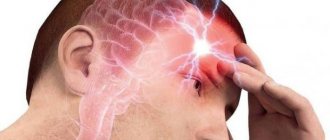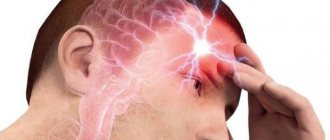One of the most common pathologies in the modern world is vegetative-vascular dystonia. It is diagnosed in 80% of the population. In pediatric practice, VSD is detected in 25% of cases. However, there is still no consensus regarding the definition of pathology.
Vegetative-vascular dystonia is a symptomatic complex that includes damage to various organs and systems. In order to diagnose the disease, determine the causes of its development and carry out the correct treatment, we recommend contacting the Yusupov Hospital. For research, the clinic’s specialists use equipment that meets quality and safety standards. Therapy is prescribed according to the latest international recommendations.
The formulation of VSD is found only in domestic medicine. However, there is no such disease in the international classification of diseases ICD-10. The symptom complex is combined into such a concept as “autonomic dysfunction” (ICD-10 code F 45.3).
Causes
Vegetative-vascular dystonia affects various systems and organs. Symptoms may appear already in fetal development. It has been proven that the largest number of diagnosed cases are detected between the ages of 20 and 40 years. Among the main reasons for the development of VSD are the following:
- hereditary burden;
- physiological features of the structure of the body;
- psycho-emotional or physical stress;
- hormonal instability;
- chronic somatic pathologies;
- history of traumatic brain injury.
Doctors at the Yusupov Hospital quickly identify the causes of the development of vegetative-vascular dystonia.
In accordance with the identified etiological factors, a treatment program is developed. Make an appointment
Low blood pressure - causes and symptoms
Low blood pressure is also a complication of VSD, causing no less trouble for patients. The patient's body reacts to irritating factors by dilating peripheral vessels, and inhibition dominates in the central nervous system. Patients justify low blood pressure for themselves with all sorts of secondary reasons, without noticing other symptoms.
The most common symptoms of low blood pressure are:
- excessive weakness;
- pathological fatigue;
- increased drowsiness, light sleep itself, frequent nightmares;
- dizziness to the point of fainting;
- impairment of cognitive functions (memory, attention, concentration).
Kinds
Doctors distinguish the following forms of vegetative-vascular dystonia:
- according to the hypertensive type;
- hypotonic type;
- according to the cardiac type;
- mixed type.
VSD of the hypertensive type. This type of pathology is accompanied by rises in blood pressure to high values. In this regard, headache, dizziness, weakness, flashing “spots” before the eyes, and a feeling of nausea appear. VSD of the hypotonic type. A symptom of this form of pathology is a decrease in blood pressure. Difficult to diagnose due to the general nature of the manifestations. Mixed type VSD is characterized by regular changes in blood pressure from high to low values. Mixed vegetative-vascular dystonia most often appears due to a hereditary predisposition. Clinical symptoms of this form of the disease are panic attacks, increased anxiety, and irritability. VSD of the cardiac type Occurs against the background of other diseases. It manifests itself as pain in the heart area.
Expert opinion
Author:
Tatyana Aleksandrovna Kosova
Head of the Department of Rehabilitation Medicine, neurologist, reflexologist
According to the latest statistics, VSD is diagnosed in 50–70% of the population. At the same time, it is not possible to identify a pattern regarding age and gender. The onset of the disease can occur at any period of life. Among adolescents, vegetative-vascular dystonia is detected in 25–40% of cases.
VSD refers to a complex of pathological symptoms united by a common concept. Diagnosing the disease can be difficult due to the variety of clinical signs. At the Yusupov Hospital, ECG and EchoCG are prescribed for examination. In addition, MRI, CT, 24-hour Holter monitoring, EEG and laboratory tests are used. Based on the results of a comprehensive diagnosis, doctors select the correct therapy. The amount of treatment depends on the severity of symptoms. Depending on the prevailing symptoms, certain groups of drugs are prescribed.
Patients often underestimate the danger of VSD. Without treatment, the disease becomes more complicated. This worsens the patient's condition and requires serious therapy. Therefore, when the first pathological signs appear, it is recommended to consult a doctor. Timely diagnosis and quality treatment are the key to a speedy recovery.
High blood pressure - causes and symptoms
An increase in blood pressure is most often a reaction of the human body to an irritant (stress, hormonal changes, climate change, etc.). The body, in turn, compensatoryly increases the heart rate, causing the heart to work harder and with greater force. But the opposite situation also happens - when high blood pressure is accompanied by a low heart rate. The reason for this is impaired regulation of the cardiovascular system. With low heart rate and high blood pressure, the brain and heart are primarily affected. Disruption of the blood supply to these organs can threaten the patient's life, so he needs immediate examination and treatment.
Over time, pressure surges become more and more common. This affects a person’s well-being. Symptoms that may bother the patient:
- increased heart rate;
- dizziness;
- headaches of different localization;
- chills or fever;
- short-term visual impairment (“spots”).
These symptoms make a person forget about everything and concentrate only on how he feels, thereby aggravating the situation. When measured with a tonometer, the increase in blood pressure can reach extremely high numbers. At the same time, the headache intensifies, the heartbeat quickens, and the fear of death appears. Despite such poor health, these pressure surges do not carry with them serious consequences. In no more than two hours, the crisis will end with increased urination.
In this case, it is very important to differentiate high blood pressure from a hypertensive crisis, which is dangerous to the health and life of the patient and requires urgent therapeutic measures.
Symptoms
Due to the fact that vegetative-vascular dystonia affects various organs and systems, the pathology has a variety of clinical manifestations. The nervous, cardiovascular, and genitourinary systems may be involved in the process. As a result, a misleading impression of the presence of other diseases is created. Experienced doctors at the Yusupov Hospital carry out differential diagnosis of conditions and identify VSD in the shortest possible time. Common symptoms of pathology are:
- Psychoneurotic: headaches, dizziness, anxiety, tearfulness. Patients are concerned about irritability, a tendency to panic attacks, sleep disturbances, daytime sleepiness, and apathy.
- Respiratory: periodic attacks of suffocation, feeling of lack of air, shortness of breath, rapid breathing, inability to take a deep breath.
- Cardiac: rapid heartbeat, feeling of pain in the heart area, chest tightness, irregular heart rhythm.
- Peripheral somatic syndromes: arthropathy, myopathy, osteochondrosis of the cervical spine.
- Genitourinary: erectile dysfunction, urination and defecation disorders.
- Thermoregulatory: changes in body temperature, feeling of chills.
- Dyspeptic: abdominal pain, feeling of nausea, increased gas formation. The stool becomes unstable, heartburn and belching appear.
Numerous positive reviews indicate the successful work of the Yusupov Hospital specialists. Doctors have been successfully identifying VSD for many years, despite the complexity of diagnosis.
Symptoms for different forms of VSD
Patients with the cardiac form of VSD are bothered by pain in the heart of a stabbing, aching, pressing nature that does not go away after taking nitroglycerin.
Patients feel palpitations, cardiac tremors, and interruptions in the functioning of the heart. The pulse can be frequent or rare, blood pressure can be low or high. During an exacerbation of VSD symptoms, patients experience a feeling of fear of death and a “lump in the throat.” They cannot calm down, rush about and demand urgent action. A panic attack unsettles a person from normal life. After an attack, patients remain fearful for a long time.
A sign of VSD is insomnia and impaired sleep quality. After a sleepless night, the patient feels exhausted and his mood worsens. The smallest trigger factor can throw a VSD patient out of balance. If VSD occurs of the respiratory type, patients experience attacks of suffocation, dissatisfaction with inhalation, chest pain, and a feeling of lack of air.
Patients suffering from hypotonic type VSD lose consciousness during a vegetative crisis, their skin becomes pale and sweaty, and their legs and arms become cold.
Dysfunction of the digestive system is manifested by heartburn, nausea with vomiting, diarrhea or constipation. Patients are bothered by cramping pain in the abdomen.
Patients with vegetative-vascular dystonia complain of pain in the joints and muscles, and they develop osteochondrosis.
In the mixed form of VSD, manifestations of all types of vegetative-vascular dystonia are determined. VSD of the hypertensive type is usually combined with functional venous hypertension, respiratory and myocardial syndromes, arterial hypotension - with respiratory syndrome and functional venous hypertension, less often with myocardial syndrome.
The cardiac form of neurocirculatory dystonia is most often combined with respiratory syndrome, functional venous hypertension and regional cerebral dystonia. Functional venous hypertension as a leading syndrome is determined in combination with myocardial and respiratory syndromes. During a crisis, all symptoms of VSD worsen. The attack begins suddenly and goes away.
Dizziness
The cause of dizziness during VSD may be a violation of cerebral vascular tone. The condition of cerebral vessels is influenced by many factors - from unpleasant news to the release of adrenaline into the blood due to stress. The catalyst for reactions that develop during VSD are:
- mental stress;
- acute and chronic stress;
- burdened heredity;
- diabetes mellitus and other chronic diseases;
- diseases of the central and peripheral nervous system;
- pathology of the thyroid gland, adrenal glands, gonads.
In case of dizziness due to VSD, neurologists at the Yusupov Hospital examine patients using modern devices from the world's leading manufacturers.
Patients undergo magnetic and magnetic resonance imaging, radiography of the cervical spine, and electroencephalography. If an exacerbation of VSD symptoms occurs due to a decrease in blood pressure, coffee and green tea, a piece of dark chocolate, and lemongrass tincture help. You can add a spoonful of honey to the tea. In case of a severe attack of vegetative-vascular dystonia, the patient should be laid down and fresh air should be allowed into the room. Treatment begins with a sedative or sedative. After measuring blood pressure, a decision is made on the advisability of drug therapy.
The cause of dizziness during VSD may be a pathology of the cerebral vessels. How to strengthen cerebral vessels during VSD? To increase the elasticity of the walls of arteries and capillaries, neurologists prescribe the following medications for cerebral vessels:
- vitamin C is an antioxidant, whose role is to protect the walls of blood vessels from destruction under the influence of free radicals, enhances the functions of vitamin P;
- vitamin P – contains a complex of polyphenols and bioflavonoids, which help strengthen capillaries and prevent the loss of vascular tone;
- nicotinic acid (vitamin PP) - expands capillaries and prevents the deposition of cholesterol on the walls of blood vessels.
If you feel dizzy with VSD, medications are prescribed that contain microelements that strengthen the walls of blood vessels and stimulate metabolism: potassium, selenium, silicon.
How to relieve dizziness with VSD? The pharmaceutical industry produces herbal preparations that improve blood circulation in the brain. These are nicotinic acid derivatives, products based on garden periwinkle and Ginkgo Biloba extracts. Nicotinic acid derivatives dilate large vessels, although small capillaries are also affected by them.
Ginkgo Biloba extracts are included in the preparations Tanakan, Bilobil, Ginkor Fort. When taken orally, they perform several tasks:
- relieve vasospasm;
- increase the permeability of the vascular wall;
- relieve swelling;
- has an antioxidant effect;
- accelerate metabolism in nervous tissue.
Garden periwinkle contains a special group of alkaloids that have a pronounced antispasmodic effect on blood vessels, accelerate metabolism, and increase microcirculation in the vessels of the brain. Mexidol helps well against dizziness with VSD.
Headache Syndrome of vegetative-vascular dystonia manifests itself in many ways.
Headache, as the most important symptom of VSD, occurs mainly in people who are susceptible to fears and phobias, strong emotions after stress. How does a headache hurt with VSD? Patients give the following description of headaches with VSD:
- is not strong and harsh;
- may be accompanied by fainting, nausea, dizziness, ringing or noise in the ears, unsteadiness of gait;
- begins in the morning, does not leave a person all day and is distinguished by its constancy;
- in pain, the patient has difficulty perceiving the world around him;
- When you tilt your head, the pain intensifies and becomes throbbing.
During a headache attack, the patient feels as if he is wearing a helmet and is squeezing his head.
Where does the headache occur with VSD? The pain is localized in a specific area or spreads throughout the head. Patients feel a feeling of discomfort in the back of the head and neck. During an attack, one ear may become blocked; sometimes the patient feels as if there is something pressing in the temples, eyes and forehead. To get rid of headaches, neurologists at the Yusupov Hospital suggest that patients eliminate traumatic factors, bad habits, normalize work and rest patterns, and nutrition. Hypnosis, manual therapy, and acupuncture are effective in treating headaches due to autonomic disorders. Doctors at the Yusupov Hospital are fluent in non-drug treatment methods and use proprietary rehabilitation methods.
Make an appointment
VSD of vagotonic type
Vagotonia is characterized by a wide variety of symptoms, which can raise suspicion of serious diseases of the heart, endocrine or respiratory system, diseases of the gastrointestinal tract or even the psyche. A thorough examination does not reveal any pathologies in the organs and systems of the body. And as a “diagnosis of exclusion,” the patient is diagnosed with “VVD of the vagotonic type.” Indeed, a variety of symptoms that do not fit into a single pathological process are caused by vagotonia - hypertonicity of the vagus nerve (“vagus”). The vagus nerve regulates the activity of organs, glands and blood vessels, and an increase in its tone causes spasm of smooth muscles throughout all structures of the body.
With this type of VSD, the activity of the parasympathetic part of the nervous system predominates (over the sympathetic), which will be confirmed by the diagnosis of CRH. A person becomes apathetic, unsure of himself, suspicious, suffers from hypochondria, suspecting that he has the most terrible and, perhaps, still unknown disease. Memory for specific things often deteriorates: numbers, dates, details, and mental activity decreases.
Physical symptoms are bradycardia, hypotension, vestibular disorders (dizziness and fainting), fatigue, shortness of breath, pale skin, cold extremities, non-localized pain in the abdomen and chest. Despite the broken state, the person experiences difficulty falling asleep and does not sleep well during the night. In advanced cases, patients experience panic attacks, depression and suicidal tendencies. Symptoms can appear in a complex manner, or they can be localized - when complaints are limited to one of the organ systems. The disease can be chronic or manifest itself in the form of outbreaks, vegetative crises, when the condition sharply worsens. In vagotonic children, the pathology also manifests itself in an abundance of allergic reactions.
Diagnostics
Vegetative-vascular dystonia has various clinical manifestations. In this regard, it is necessary to carefully carry out diagnostics to differentiate pathological conditions. The main research methods include:
- clinical blood test;
- biochemical blood test;
- general urine analysis;
- blood for thyroid hormones;
- rheoencephalography;
- ECG;
- EchoCG;
- 24-hour Holter monitoring;
- MRI.
Doctors at the Yusupov Hospital use modern equipment. With their help, it is possible to establish the causes of vegetative-vascular dystonia in the shortest possible time. Experienced specialists select effective treatment aimed at eliminating the symptoms of the pathological condition.
Cost of initial appointment, diagnostic examinations and treatment
As for the initial appointment, its cost in most cases is low; in fact, it is a consultation procedure. But one should not neglect its importance - an experienced doctor is able to recognize characteristic symptoms and notice even small but important manifestations of abnormalities.
The price of diagnostic procedures and laboratory tests may vary significantly in different clinical cases. For one patient, general tests and several examinations will be enough; for another, diagnosis may take longer and require additional studies and tests. This is due to both the complex nature of VSD and the individual characteristics of each patient’s body.
A similar picture is typical for treatment. Its cost is determined by many factors; sometimes the therapeutic process has to be adjusted. To roughly navigate the prices for diagnosis and treatment of VSD in Moscow, you can familiarize yourself with the corresponding table of costs for the most common diagnostic procedures.
Treatment
Therapy for vegetative-vascular dystonia begins with a visit to a psychotherapist and lifestyle changes.
Medicines are used exclusively in complex treatment. The drug and dosage are determined by doctors at the Yusupov Hospital after examining the patient. For VSD, neurologists prescribe the following medications:
- antidepressants;
- sedatives;
- tranquilizers;
- nootropic drugs.
Antidepressants are necessary to get rid of the manifestations of depressive conditions that are observed with vegetative-vascular dystonia.
Medicines quickly relieve anxiety and depression, improve sleep quality and increase appetite. For vegetative dystonia, antidepressants are prescribed first, since eliminating depression simultaneously reduces other manifestations of VSD. With prolonged use, the drugs are addictive. Antidepressants cause side effects that include various disorders of the central nervous system, increased sweating, heart rhythm disturbances and nausea. Doctors at the Yusupov Hospital are careful when choosing a drug for the treatment of VSD. The most harmless and effective antidepressants are azafen, deprim, cipralex. Sedatives reduce anxiety. In the treatment of VSD, drugs based on medicinal herbs, barbiturates, bromine and magnesium preparations are used. Herbal remedies are considered the safest, since they have minor side effects and do not have significant contraindications. For VSD, neurologists use drugs based on valerian extract (Novo-Passit, Dormiplant, Persen) and hawthorn (Kralal, Fitosed). Barbiturates have significant side effects. They can be addictive, and if the dosage is slightly exceeded, they can lead to poisoning. The safest drugs in this group are Corvalol, Barboval, Valocordin. They are prescribed for the cardiac form of VSD.
Tranquilizers are effective medications that provide a quick but short-term sedative effect. They relieve feelings of fear, worry, anxiety, and relieve emotional stress. Drugs of this pharmacological group are not prescribed during pregnancy and weakened immunity, children and mental patients. VSD therapy is carried out with gentle medications with a gradual transition to more powerful drugs. To treat VSD, doctors use diazepam, nozepam, oxazepam, seduxen, and elenium.
Nootropic drugs include drugs that affect certain brain functions:
- activate mental activity;
- improve memory;
- increase learning abilities.
The use of drugs in this group relieves patients with VSD from weakness and apathy, promotes clarity of consciousness, and eliminates psychomotor retardation. Nootropics have mild side effects and low toxicity. Most often, doctors prescribe glycine, phenibut, piracetam, nootropil, and fezam for VSD.
What is VSD?
The diagnosis of VSD is made to a patient when he exhibits vague complaints and symptoms that do not fit the description of any disease. Among themselves, specialists quite often call this condition in their patients “diagnostic garbage”, and an entry may appear on the card - psycho-vegetative syndrome, vegetative-vascular dystonia, neurocirculatory dystonia, SVD of the heart.
But in reality the situation is much worse than it looks on paper. The patient needs to clearly understand that such diagnoses indicate that:
- As a result of the diagnosis, the doctor did not find the real reason that causes these symptoms. And recording the VSD allows us not to conduct further research.
- The person is not given adequate treatment, in which case the condition worsens. And those medications that were prescribed are just an imitation of treatment. In fact, a person’s rights to cure in this case are actually limited, because he has a diagnosis, which is not a diagnosis at all. It turns out to be such a vicious circle.
- The result of such unnecessary treatment does not improve the condition, but side effects from taking medications are to be expected.
If this diagnosis is made during the first visit to the doctor, then it is necessary to change the doctor and find a qualified neurologist who will certainly conduct a comprehensive examination, study the patient’s condition and be able to get to the causes of the problem. In addition, he will have to involve other specialists to clarify the final diagnosis.
Complications
Many people do not attach importance to such a diagnosis as vegetative-vascular dystonia. This opinion is wrong. Like any disease, VSD can lead to complications. Among them:
- hypertension;
- hypotension;
- visual impairment;
- anemia;
- depression;
- weight loss;
- involuntary urination.
In this regard, doctors recommend seeking medical help when the first pathological signs appear. This will help to identify the problem in time and carry out a course of treatment.
Advantages of treating VSD at the clinic of JSC "Medicine"
Vegetative-vascular dystonia is a multifactorial disorder in the body; its successful treatment requires an integrated approach and coordinated work of doctors of many specialties. Among the undeniable advantages of JSC “Medicine” (clinic of academician Roitberg), it is worth mentioning 3 key points:
- High professionalism of doctors - the staff consists of more than 300 experienced practicing doctors and diagnosticians of 67 medical specialties. Leading corresponding members of the Russian Academy of Sciences, academicians, professors, doctors and candidates of medical sciences advise here. The clinic was the first in Russia to receive accreditation according to the international standards for assessing the quality of medical care JCI. Joint Commission International, considered the highest level of accreditation worldwide.
- Ultra-modern technical base - equipped with the latest generation diagnostic and treatment equipment from the world's leading manufacturers. This allows you to create your own scientific and clinical developments in almost all medical areas. For many years, the clinic of JSC "Medicine" has served as a clinical base for the Department of Therapy and Family Medicine of the Russian National Research Medical University named after N.I. Pirogov (RNIMU) and is among the innovatively active healthcare institutions in Moscow.
- High-quality medical care - the effectiveness and safety of treatment is guaranteed by the principle of Academician N.A. Semashko, which states: “One patient - one doctor.” The attending physician is assigned to each patient and works closely with colleagues from related medical specialties. A developed diagnostic base and medical care technology built according to international standards make it possible to make a diagnosis at an unprecedented speed. In just 1 day from the moment of the initial examination and diagnostic measures, you can receive detailed results of laboratory tests, detailed diagnostic reports and doctor’s recommendations.
It is important to know: VSD is not a critically severe disorder, but can provoke one in the absence of proper medical care. In case of early access to a doctor, treatment time is significantly reduced and financial costs are reduced. Don’t delay your visit, make an appointment at a time convenient for you, and we will help you regain your health!
Prevention
In order to reduce the risk of developing symptoms of VSD, the following preventive recommendations must be followed:
- to live an active lifestyle;
- avoid psycho-emotional stress;
- do not abuse alcohol or caffeine-containing drinks;
- stop smoking;
- adhere to a rational and balanced diet.
These medical advice will help minimize the possibility of vegetative-vascular dystonia.
When the first signs of pathology appear, you must contact a doctor for a medical examination. Doctors at the Yusupov Hospital in Moscow will perform a full course of diagnostics necessary to identify vegetative-vascular dystonia. They will prescribe treatment that will relieve the unpleasant symptoms of the disease.
You can ask questions or make an appointment with a doctor by phone.
Make an appointment
Somatoform dysfunction
With somatoform dysfunction, a person usually complains about a specific organ or group of organs that are regulated by the autonomic nervous system. These may be complaints about the cardiovascular, gastrointestinal, respiratory or genitourinary systems. The patient associates his condition with a physical disorder, but based on the results of the examination, the doctor finds no reason for it. The true cause of the malaise is a disruption in the functioning of the autonomic nerve centers. In addition to subjective localized pain, heaviness, burning or tension, specific symptoms of VSD can be easily identified among the patient’s complaints.
The variety of symptoms of autonomic dysfunction makes it difficult for the doctor to get to the root cause of the disease. Therefore, in addition to collecting anamnesis, it is important to conduct instrumental studies of the functioning of the autonomic nervous system. Find out more about diagnosing autonomic disorders.









